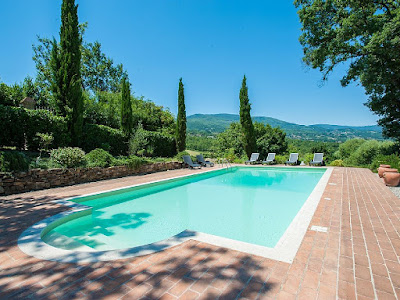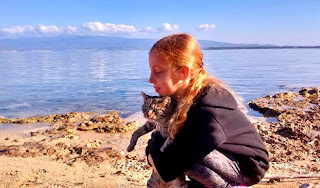It's Friday 13th, but while that's not considered bad luck in Italy, there are plenty of things which are. The country is home to plenty of bizarre superstitions - here are some you should definitely be aware of.
Some Italians take superstitions seriously, often doing things
'per scaramanzia' - to ward off bad luck. So if you want to ensure good luck comes your way, here are some of the things to watch out for, according to traditional Italian beliefs.
1. Friday the 17th
First, the good news. Friday the 13th isn't a bad omen as it is in Western countries - but Italy has its own date that you should be wary of: Friday the 17th. Just as some Western airlines avoid including the 13th row on planes, you might find number 17 omitted in Italian planes, street numbering, hotel levels and so on - so even if you're not the superstitious type, it's handy to be aware of. The reason for this is because in Roman numerals, the number 17 (XVII) is an anagram of the Roman word VIXI, meaning “I have lived” - the use of the past tense suggesting death, and therefore bad luck. It's less clear what's so inauspicious about Friday.
2. Spilling olive oil
Thought there was no point crying over spilled olive oil? Think again; in Italy, this is very bad luck indeed. And it's not just because Italians don't want to see their top quality oil wasted (though the tradition likely has its roots in a time when olive oil was a luxury), but it's considered to bring ill fortune.
3. Toasting
In Italy, it is believed that you should never toast with a glass of water - the thinking behind that is that it suggests bad luck because water is less expensive and flavourful than wine. In fact, the whole tradition of toasting is a minefield: it's also bad luck to cross arms with anyone as you clink glasses, to avoid eye contact while toasting or to set down your glass before having a first sip.
4. The Evil Eye
The
malocchio is the Italian belief that a look of jealousy can bring harm to those it is aimed at - usually in the form of physical pain, such as a headache. Having birds or birds' feathers in your house is also a big no-no because their patterns are supposedly similar to the evil eye. To ward off the evil eye you must make a gesture similar to horns and point it downwards behind your back - some Italians take things a step further and wear a lucky amulet shaped like a horn.
5. Touch Iron
If you're from the UK or US, you might be used to saying 'touch wood' or 'knock on wood' after saying something that might tempt misfortune. In Italy, look for some iron -
'tocca ferro' is an abbreviation from
'toccare ferro di cavallo' (touch horseshoe) which dates back to when horseshoes were thought to ward off devils, witches and evil spirits. These days, superstitious Italians might still carry a horseshoe charm or a simple piece of iron around with them, just in case.
6. Lamp posts
When walking arm in arm with a friend, make sure to pass on the same side of a lamp post rather than splitting to go around it. Italian folklore warns that straying from this rule could spell the end of the friendship.
7. Black Cats
In some cultures, black cats are thought to bring good luck, but it's quite the opposite in Italy, where they are considered unlucky due to associations with witchcraft. Hearing a cat sneeze, on the other hand, brings good luck.
8. Sharp Objects
If you receive, for example, a penknife as a gift, prick the person who gave it to you, or give them a coin in return. If you fail to do this, you risk ruining the friendship forever.
9. Beds
It is believed that if you put a photo of a loved one on a bed - for example while tidying, packing or doing housework - this will bring them bad luck. Meanwhile, placing a hat on a bed is unlucky too. These beliefs date back to a time when beds were associated with illness and death, and priests would remove their hats when arriving to visit someone in their sickbed.
10. The Leaning Tower of Pisa
Local students avoid the monument. Tradition states that if you go to the top of the famous leaning tower whilst you are at university, then you will never be able to graduate. Several cities and towns around the country have their own version of this superstition: in Bologna for example, climbing the local tower before graduating is thought to mean you will never do so.
11. Touch your nose
Saying the same word at the same time as somebody else is thought to be an omen that you will never get married - but there's a way to reverse your fortune. Touch your nose immediately and the bad luck will be undone.
12. Thirteen's a crowd
Although in general the number 13 isn't as spooky as in other countries, at a dinner table it is meant to be very bad luck indeed. The superstition stems from the Last Supper and the fact that Jesus’ traitor, Judas Iscariot, was the 13th and final person to be seated, so if you find yourself at a table of 13, watch your back.
13. Seeing an Empty Hearse
Spotting a hearse with no coffin inside is thought to be an omen that your own death is approaching. To ward off this ill fate, men must touch their groin and women their breast as a gesture of good luck and fertility.























